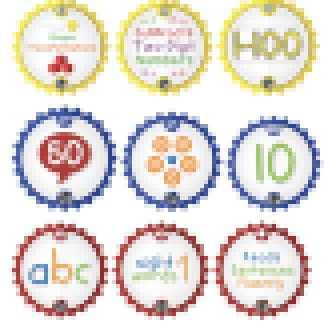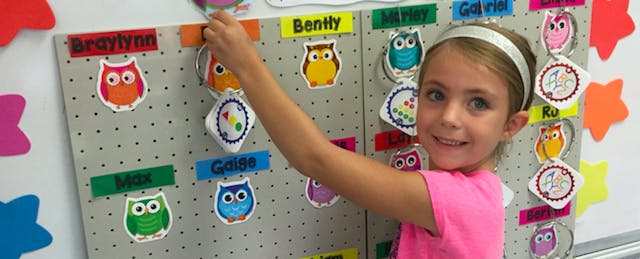For kindergarteners in Pennsylvania's Elizabeth Forward School District, grades have become a thing of the past. Instead, students earn badges, awarded for crossing academic milestones: reads sentences fluently, subtracts two-digital numbers. Imagine mastery-based grading, add colors, and you have our badging system.
Badges have long been used to designate achievements. Soldiers earn badges and medals on the field of battle; scouts earn badges to prove they’ve mastered different skills. And for this generation of digital natives, with their keen understanding of leveling up, badges also make sense.
Most schools, however, stick with what they know, reporting student progress with letter grades, numbers or percentages. The problem with this traditional reporting is that primary-aged students are not developmentally able to associate a letter or percentage grade with their performance, and so these scores tend to carry little meaning for them.
Realizing this, during the 2015-2016 school year, the Elizabeth Forward elementary teachers and administrative staff began to discuss the possibility of using micro-credentials and badging for their youngest students. A group of cross-district kindergarten teachers met with elementary principals to talk about the potential that badging could have. The teachers were immediately sold on the fact that students, who’d grown up with online games and trophies, would understand the concept of leveling up better than an A, B or C.
To start, practical skills, literacy and numeracy skills were identified and classified into 68 different badges. Each skill was then associated with content from our curriculum. The teachers decided to allow a great deal of flexibility for the assessment of each skill, so students would have the opportunity to demonstrate what they know differently. A graphic artist, who happened to be an Elizabeth Forward graduate, designed the badges, which were then printed, sorted and distributed, along with the other necessary supplies to start the journey.

The concept of badging was met with approval by teaching staff, administration, parents, and most importantly, the students. After introducing badging to parents and students at the 2016-2017 Kindergarten Kick-Off, students began to earn badges their first week of school—and they loved it.
Kindergarten parent Katie Ricardi has been one of many fans of the idea. “They have something physical they can hold in their hand saying, ‘I earned this,’” she explains. Students can see their badges displayed on a large ring in the classroom, or they can see their accomplishments on the FreshGrade app, which allows parents to see what badges their children have earned and what they needed to do to earn it.
“It’s almost like a digital portfolio where the parents can go online and see what badges their children have earned,” states kindergarten teacher Lindsay Murray. Parents Joe and Jessica Mull agree. “I think every parent has had the experience of trying to pull out from their child what school was like, what did they do. The app and notifications gives us a way to ask our daughter something very specific about what happened that day.” Ricardi agrees that there is always something fun to talk about when her daughter gets home.
Kindergarten Badges - Elizabeth Forward School District from Matthew R. Day on Vimeo.
Joe Mull also says he likes that the school district is taking advantage of technology and trying new things. “We like to see [the district] pushing the boundaries of education doing different things that are compelling and progressive in the classroom,” he says. And Superintendent Bart Rocco believes that Elizabeth Forward is pushing the learning of their leaders and teachers. “What that’s going to do is to push the learning of our kids, and that’s why we are here, to help kids learn.” The district is hoping to continue the badging initiative with subsequent grades as they work to determine the specific needs of each level.


